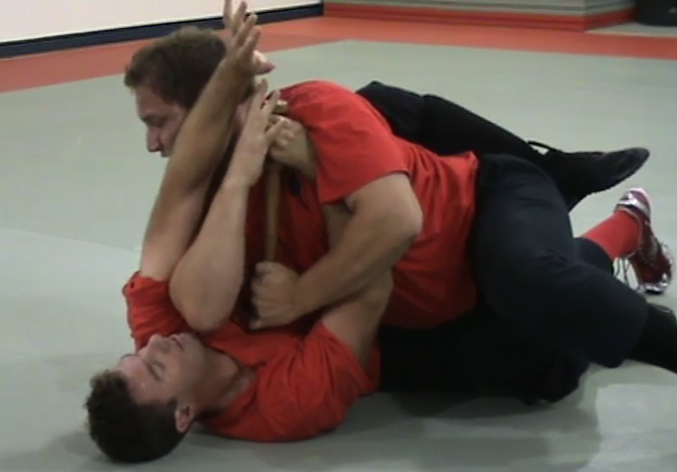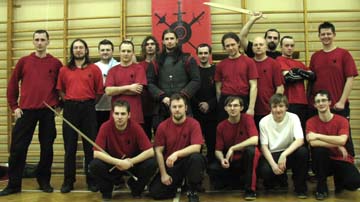
 |
||||||||
|
|
||||||||
 The
ARMA aims its instruction efforts at guiding the experienced practitioner
as well as directing the beginning novice. We offer professional accreditation in a cutting edge historical fencing curriculum.
Our program is designed to
take students through a complete curriculum, providing them with a certified
set of historical skills. We
provide a series of drills and exercises (Armatura)
that enable students to acquire the skill base to teach themselves and
quickly
make real progress. The
ARMA aims its instruction efforts at guiding the experienced practitioner
as well as directing the beginning novice. We offer professional accreditation in a cutting edge historical fencing curriculum.
Our program is designed to
take students through a complete curriculum, providing them with a certified
set of historical skills. We
provide a series of drills and exercises (Armatura)
that enable students to acquire the skill base to teach themselves and
quickly
make real progress. Our member certification program is interested in educating and sincerely training practitioners in these skills, not merely "endorsing" a student as "approved." Our Open Workshops are designed for general enthusiasts of all interest levels and dispositions, while courses in our Member Training Program (MTP) are directed for long-term practitioners and students seeking certification or eventual instructor-level rank from ARMA.
The program content offers a composite approach derived from the teachings of a variety of historical Masters of Defense and European fighting treatises from the late-14th to mid-17th centuries. It is also specifically designed to assist students and practitioners over extended distances who are without the benefit of a competent instruction or practice partners. It focuses on different weapons and skill sets, beginning with the longsword and basic unarmed teachings. Under the Member Training Program (MTP) a student may first seek longsword adept ranking as a general Scholar then advance as a Free-Scholar, which consist of further longsword training and specializations in additional weapons or skills. These may include focus on short sword, rapier, messer, halberd, staff, grappling, or dagger and other weapons, as part of instructor or Provost ranking. See also Students and Ratings within the ARMA.
Each Training Program course is aimed at skill advancement and self-learning but also designed to progress the student toward eventual Competency Assessment for Certification in each area. Following the ARMA system of training and using ARMA Director John Clements’ pioneering curriculum and teaching method, each session allows the student to as acquire knowledge of the underlying principles and concepts of the source teachings as well as learn their core fighting techniques. The ARMA system of exploring real historical methods and techniques places emphasis on proper intent –i.e., learning and executing moves with realistic speed, force, and range in order to acquire a correct sense of counter-timing, leverage, balance, and motion.
 The
primarily
purpose of the ARMA system for practice is to offer a foundation of earnest
martial skill through competency in un-armored fighting (Blossfechten)
with the
longsword. This is acquired through a holistic comprehension of specific
principles and concepts derived from the works of the surviving historical
treatises. The components of this foundation, including unarmed elements,
form the basis for study of all weapons and fighting methods. The
primarily
purpose of the ARMA system for practice is to offer a foundation of earnest
martial skill through competency in un-armored fighting (Blossfechten)
with the
longsword. This is acquired through a holistic comprehension of specific
principles and concepts derived from the works of the surviving historical
treatises. The components of this foundation, including unarmed elements,
form the basis for study of all weapons and fighting methods.
The ARMA is far more than a "web presence" or "local group." Ours is a martial teaching system that offers results in historical fencing skills, not honorary "titles". We are no mere group of costumed reenactors that popped into existence with the recent explosion of the Web. Ours is not a curriculum derived from 19th century fencing styles or modern theatrical combat theories nor borrowed from popular Asian styles. The ARMA system reflects more than a decade of use in earnestly exploring the subject of Medieval and Renaissance arms and associated fighting skills as legitimate self-defense disciplines. From our earliest efforts, our system's focus has been to re-develop genuine ability through serious study of surviving fighting texts. What makes the ARMA’s knowledge and training program for historical fencing unique? The ARMA's classes, workshops, and seminars utilize our continually revised system of interpretive-application of the historical source teachings within a set of established drills and exercises –for which we have adopted the old Roman legionnaire’s term from Vegetius, Armatura. Through our Study Approach and Training Methodology we strive to keep the martial in martial arts practice. For a list of seminar courses within our See also: the ARMA System for Historical Fencing |
Open
Workshops
|
|
|
|
|||
|
|
|||
|
|||